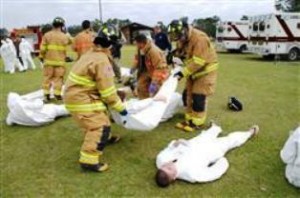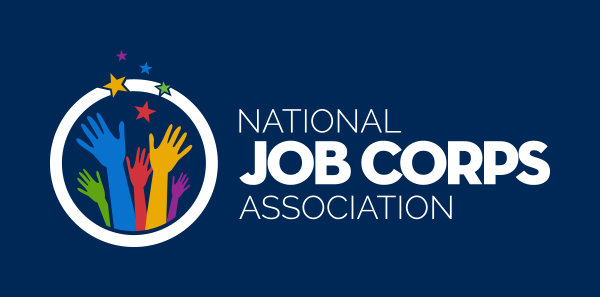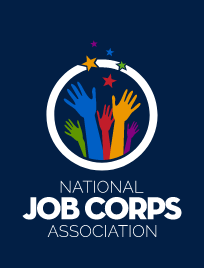 Steel Flint 2011
Steel Flint 2011
3/17/2011 By 1stLt Kyle Thomas, Marine Corps Logistics Base Albany
Soon the soccer field is filled with first responders donned in gray protective gear and gas masks. They work feverishly to treat the casualties and decontaminate the area.
Fortunately, this ominous scene is not an actual event, but rather an exercise meant to test the decision making and response procedures of base and county emergency response agencies.
The exercise, Steel Flint 2011, involved not only Marine Corps Logistics Base Albany personnel but also the Georgia State Patrol, Phoebe Putney Memorial Hospital, Dougherty County Emergency Management Agency and Emergency Management Service, Albany Fire Department and Dougherty County Law Enforcement. Air Evac Life Team, a private medical air evacuation company, also participated.
“We haven’t done something like this in awhile,” said Lt. Col. Don Finn, executive officer, MCLB Albany. “It is important we do this now rather than wait for the real thing to occur.”
Marines from Marine Corps Logistics Command, stationed at MCLB Albany, and civilian students from Turner Job Corps, acted as casualties undergoing a treatment and decontamination process meant to mimic that of an actual response. The fact that this was not an actual scenario did not prevent the role players from crying out in mock pain, flailing, and creating a scene of panic.
Steel Flint 2011 was also designed to strengthen the working relationships among all of the organizations involved. The training scenario allowed the agencies to learn the hard lessons now rather than wait for a real world event to occur. One of these lessons involved treating more than 75 victims at the scene of the attack and then evacuating them to hospitals in the surrounding area.
How and what to communicate to the public was also another lesson that was learned.
“It (the exercise) helped us as far as working together as a team and making sure everything is accurate,” said Jennifer Almeida, public information officer, Phoebe Putney Memorial Hospital. “It helped us realize the things we need to work on. That’s why we do drills.”
As the crisis was acted out by students of Turner Job Corps, other students, journalism majors from Darton College called Almeida and others were managing the lines of communication to the outside world. The idea was to simulate rampant media interest as the scenario unfolded.
Meanwhile in another location, individuals in the Emergency Operations Center also had to manage the crisis by coordinating the response of all the agencies involved. This included tracking more than 75 casualties as they were being transported to Phoebe Putney Memorial Hospital as well as keep detailed information on their statuses.
http://www.marines.mil/unit/mclbalbany/Pages/2011/031711/SteelFlint2011.aspx


 JOB CORPS
JOB CORPS